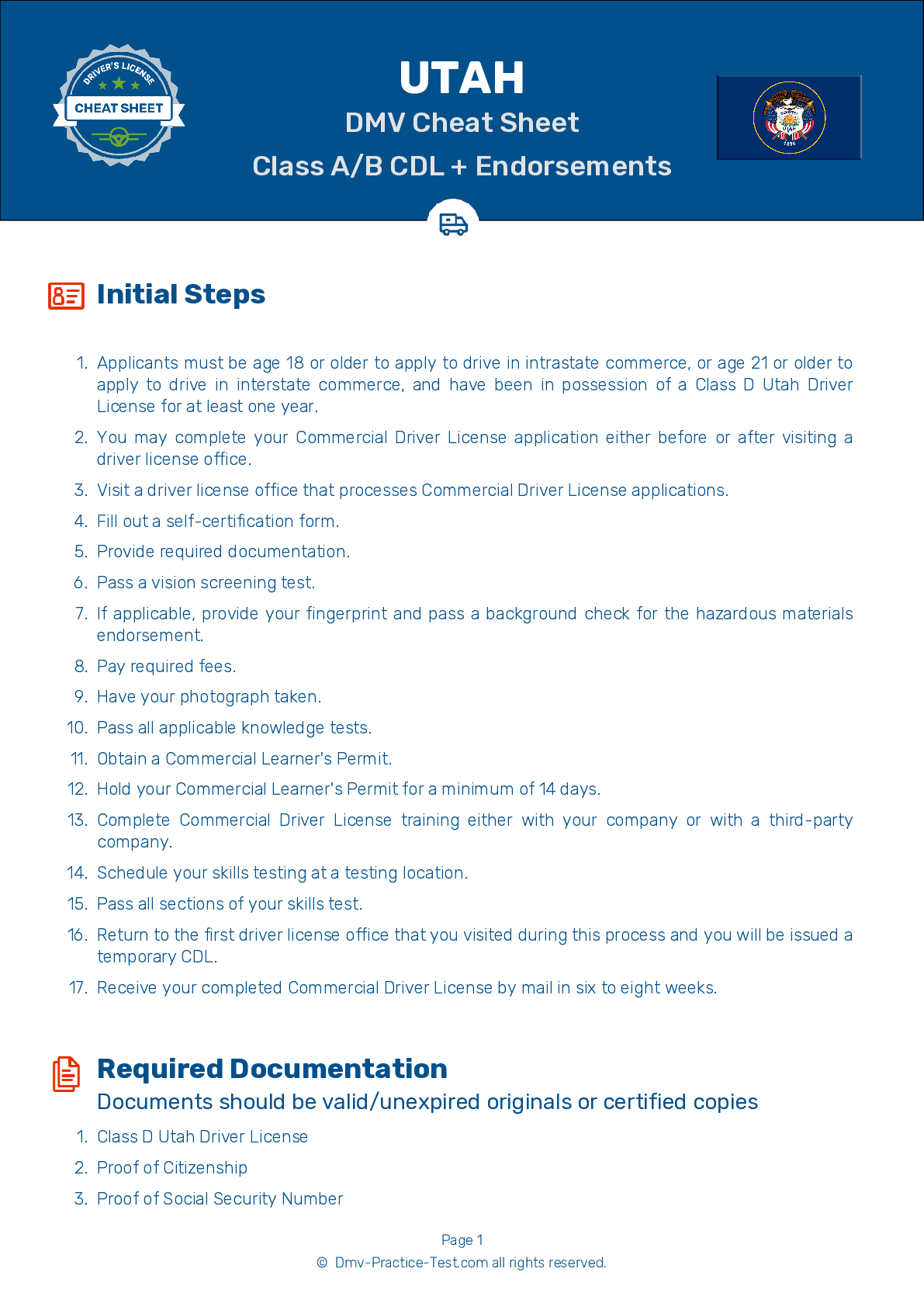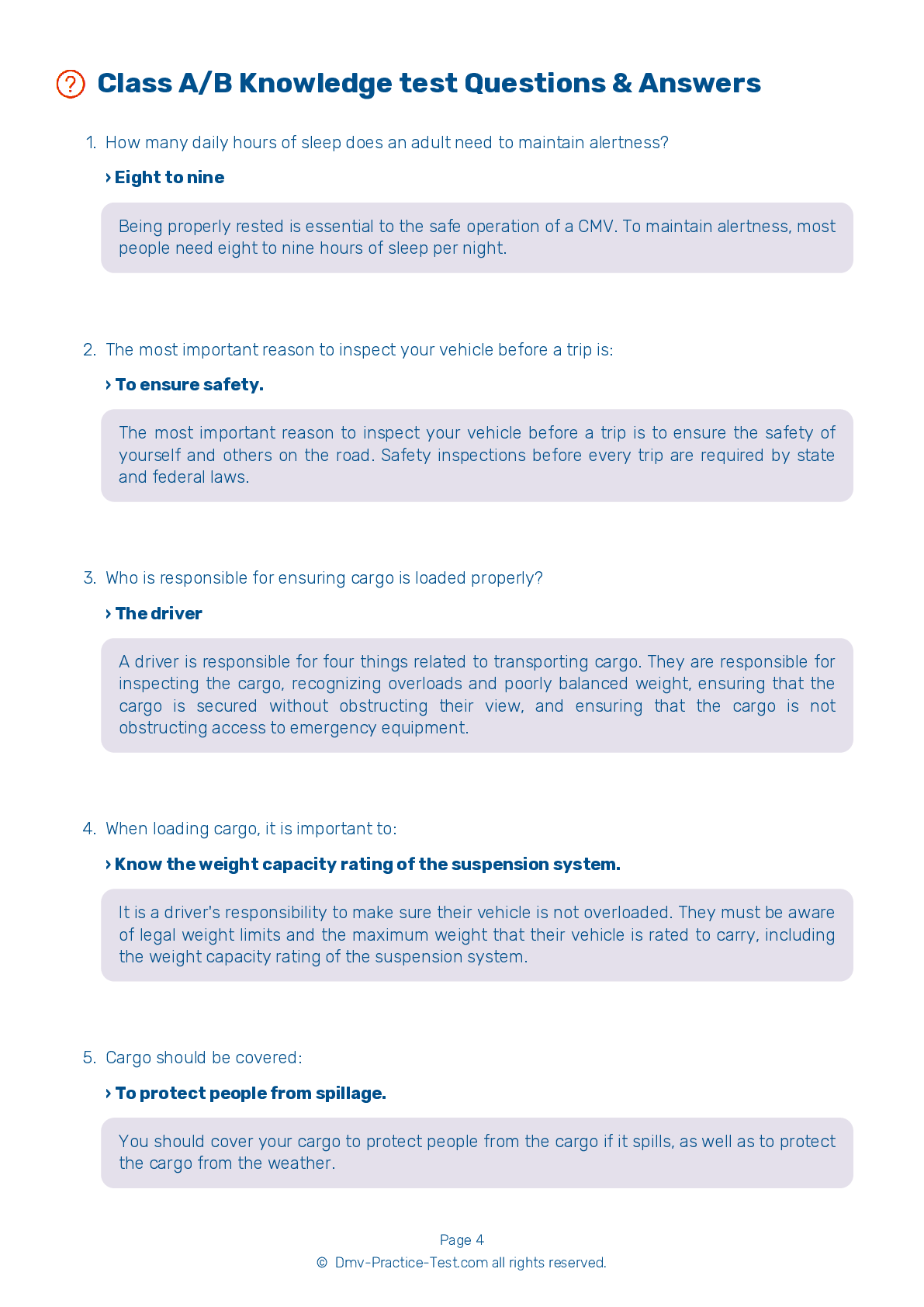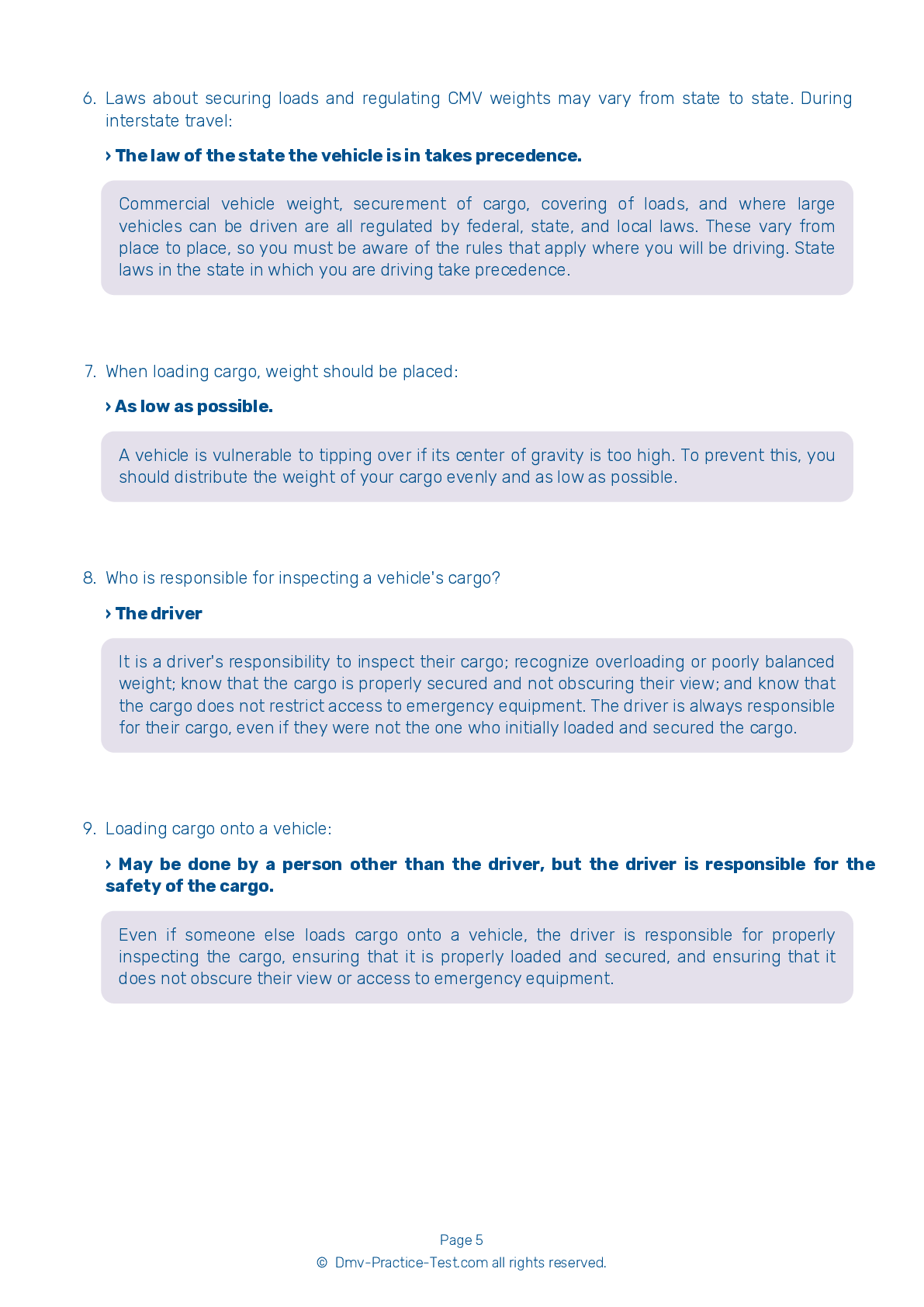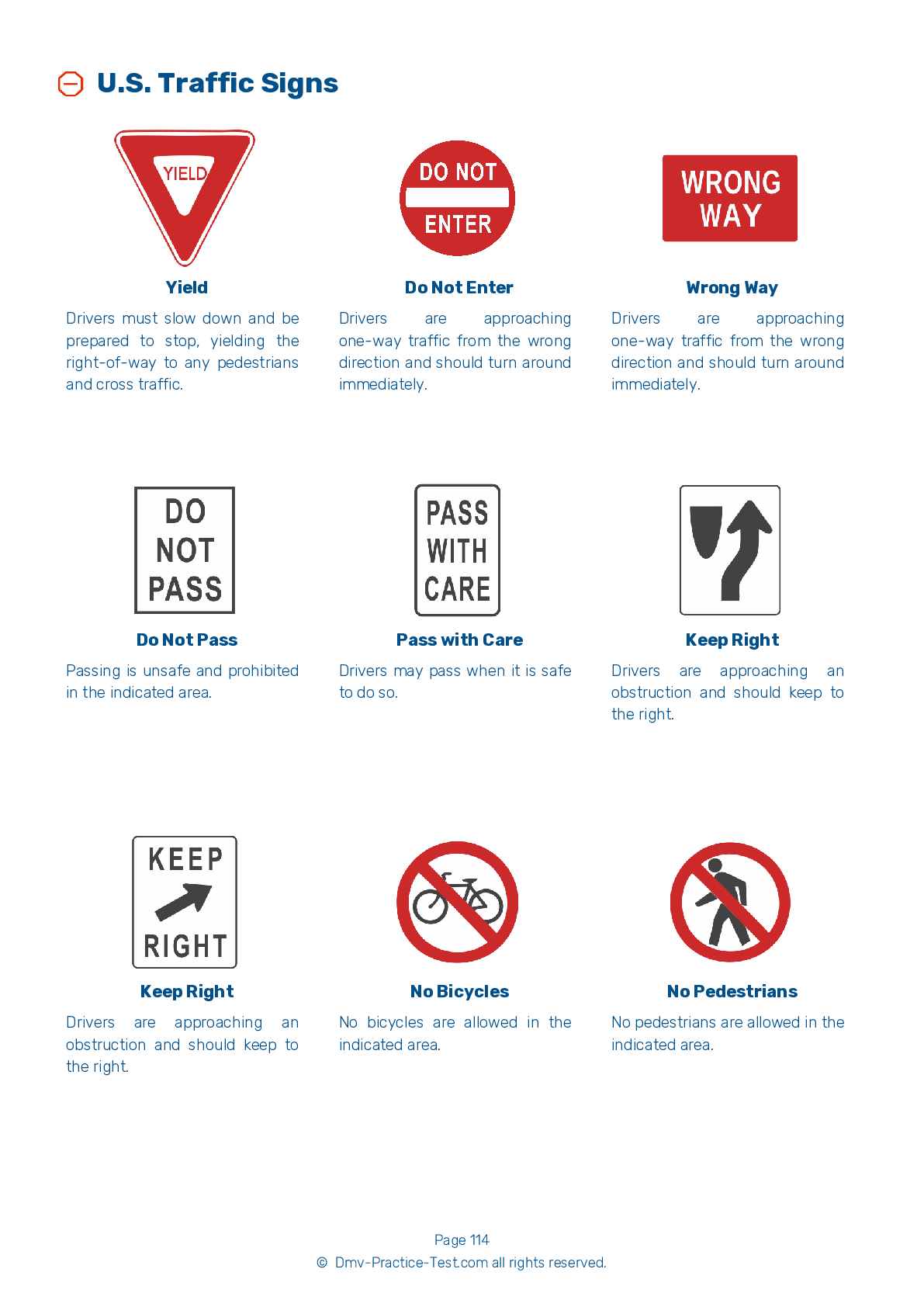Knowledge Test Class A #2
Class A Driving Test | Utah 2025 #2
Train for FREE online with our Utah class A license test. The official exam test consists of several obligatory parts, with all of them checking your knowledge of different blocks of road rules. If you need to obtain a UT CDL class A permit in 2025, practice as much as possible. Free sample tests published on our website will help you check and improve your knowledge and boost your grades. Please bear in mind that CDL class A requirements may vary from state to state.
50
40
20
1 . Tread depth in the major grooves on a front tire should be at least:
3/4 of an inch.
Tires need to have at least 4/32 of an inch of tread depth in every major groove on the front tires, and at least 2/32 of an inch of tread depth on other tires.
2 . If a truck is equipped, a trailer brake hand valve can be used to:
If a tractor-trailer is so equipped, the trailer brake hand valve can be used to stop the vehicle from rolling back when being started from a stop.
3 . A person working on a disabled vehicle on the shoulder of a road:
Should not be assisted.
Be cautious when driving near people who are working on disabled vehicles. The task will likely consume their attention, so they may not be aware of traffic or other hazards on the road.
4 . To apply for a CDL, you must be at least:
25 years old.
You must be at least 18 years old to apply for a CDL. However, you must be at least 21 years old to drive in interstate commerce, as well as to have a hazardous materials, passenger, or school bus endorsement.
5 . While driving downhill, you should brake until you reach a speed that is ____ below your safe speed, then release the brake pedal.
20 mph
While driving downhill, you should hold down the brake pedal until your vehicle reaches a speed 5 mph below your safe speed, then release the brake pedal. Repeat this process.
6 . Rough acceleration:
Should be used to prevent rust from forming.
Always accelerate smoothly and gradually so that your vehicle does not jerk. Rough acceleration can cause mechanical damage.
7 . When going downhill, shifting into neutral is an effective way to slow down a vehicle.
Always downshift before beginning to drive downhill. Take the hill at a speed that does not require you to overuse your brakes.
2025 Utah | Frequently Asked Questions
To secure a CDL Bus endorsement in Utah, you must first have a Commercial Driver's License (CDL). Then, pass the Passenger Vehicle written test. After passing the test, you have to complete a training course and pass a skills test in the type of vehicle you will be driving. Lastly, pay the required fees.
To obtain a CDL Bus license in Utah, you need a valid driver's license, be at least 21 years old, and pass a vision test. You must also complete a CDL application and pass the General Knowledge test, Passenger Transport test, and School Bus Endorsement test if applicable. Lastly, you must pass a pre-trip vehicle inspection and a skills test.
Yes, specific training is necessary for a CDL Bus endorsement in Utah. After passing the Passenger Vehicle written test, you must complete a training course that includes both classroom and hands-on driving instruction. This training is designed to provide you with the skills needed to safely operate a bus and handle passengers.
CDL Bus licenses in Utah fall under three classifications: Class A, B, and C. Class A is for vehicles with a combined weight over 26,001 lbs where the towed vehicle exceeds 10,000 lbs. Class B is for single or combination vehicles where the single vehicle exceeds 26,001 lbs. Class C is for vehicles designed to transport 16 or more passengers, including the driver.
No, you cannot use your personal vehicle for the CDL Bus driving test. The vehicle you use must match the class of CDL you're applying for. So, for a bus endorsement, you'll need to test in a commercial bus. This ensures you can handle the specific vehicle type in real-world scenarios.
During the CDL Bus driving test in Utah, you will be evaluated on various skills including pre-trip vehicle inspection, basic vehicle control, and on-road driving. This includes maneuvers like stopping at designated points, backing up in a straight line or into a docking area, turning, merging and exiting traffic, and navigating intersections or railway crossings.
Yes, to obtain a CDL Bus endorsement in Utah, you must pass a Department of Transportation (DOT) physical examination. This exam ensures you're physically capable of safely operating a commercial vehicle. It covers aspects like vision, hearing, blood pressure, and checks for conditions like diabetes or heart disease that could interfere with driving safety.
No, it is illegal to transport passengers in a commercial vehicle without a valid CDL Bus endorsement in Utah. Driving a commercial vehicle, such as a bus, without the appropriate license can result in hefty fines, license suspension, or even jail time. Always ensure you have the correct endorsements for the vehicle you're operating.
Yes, the CDL Bus endorsement can be added to your existing CDL license in Utah. You'll need to pass the passenger endorsement knowledge test and a skills test in the vehicle group you wish to drive. However, you won't need to apply for a new CDL license altogether.
Yes, there are restrictions for drivers with a CDL Bus endorsement in Utah. Drivers must not have any serious traffic violations within the past two years. They are also subject to random drug and alcohol testing. Moreover, they must comply with federal regulations regarding hours of service, which limit the number of hours they can drive without rest.



